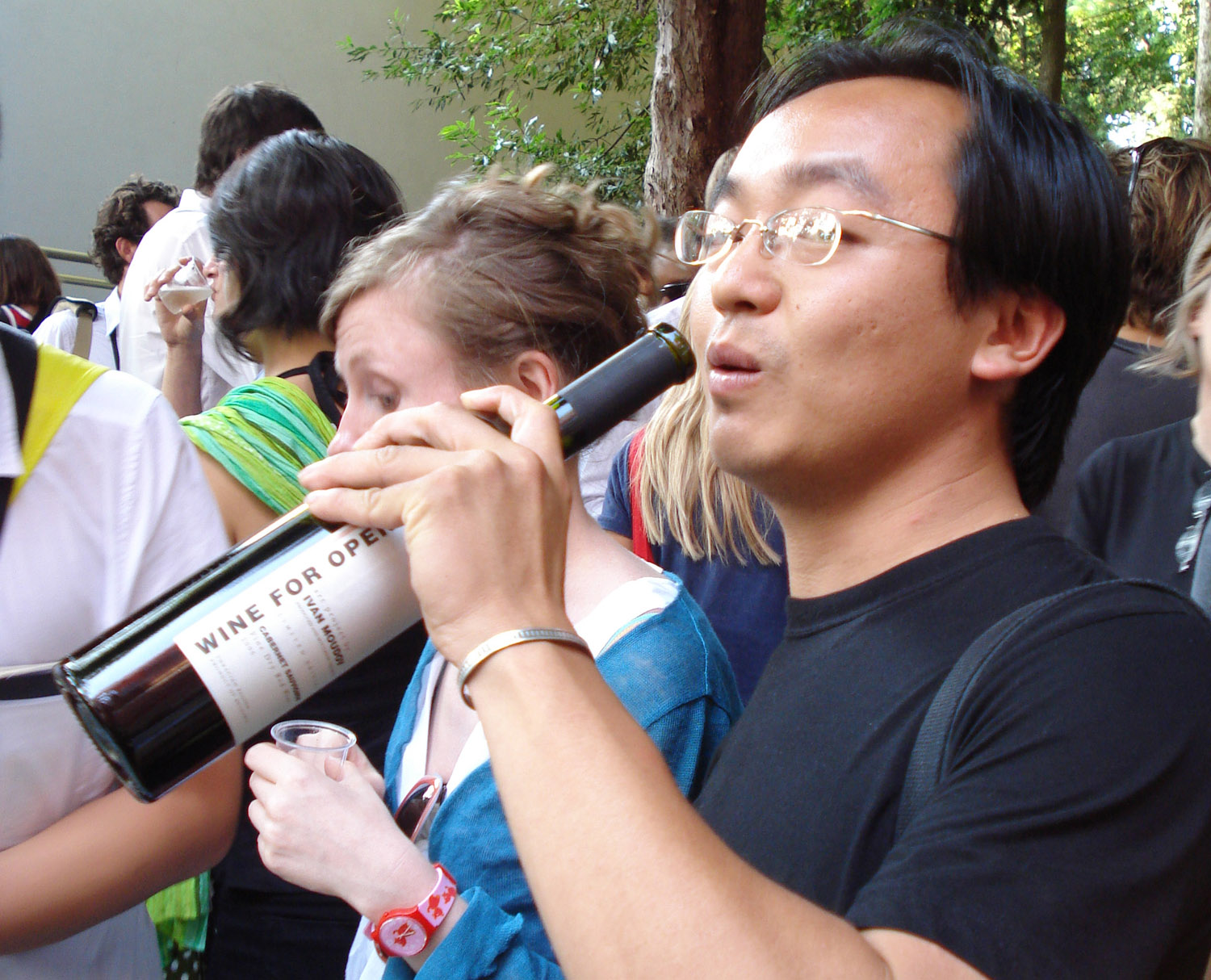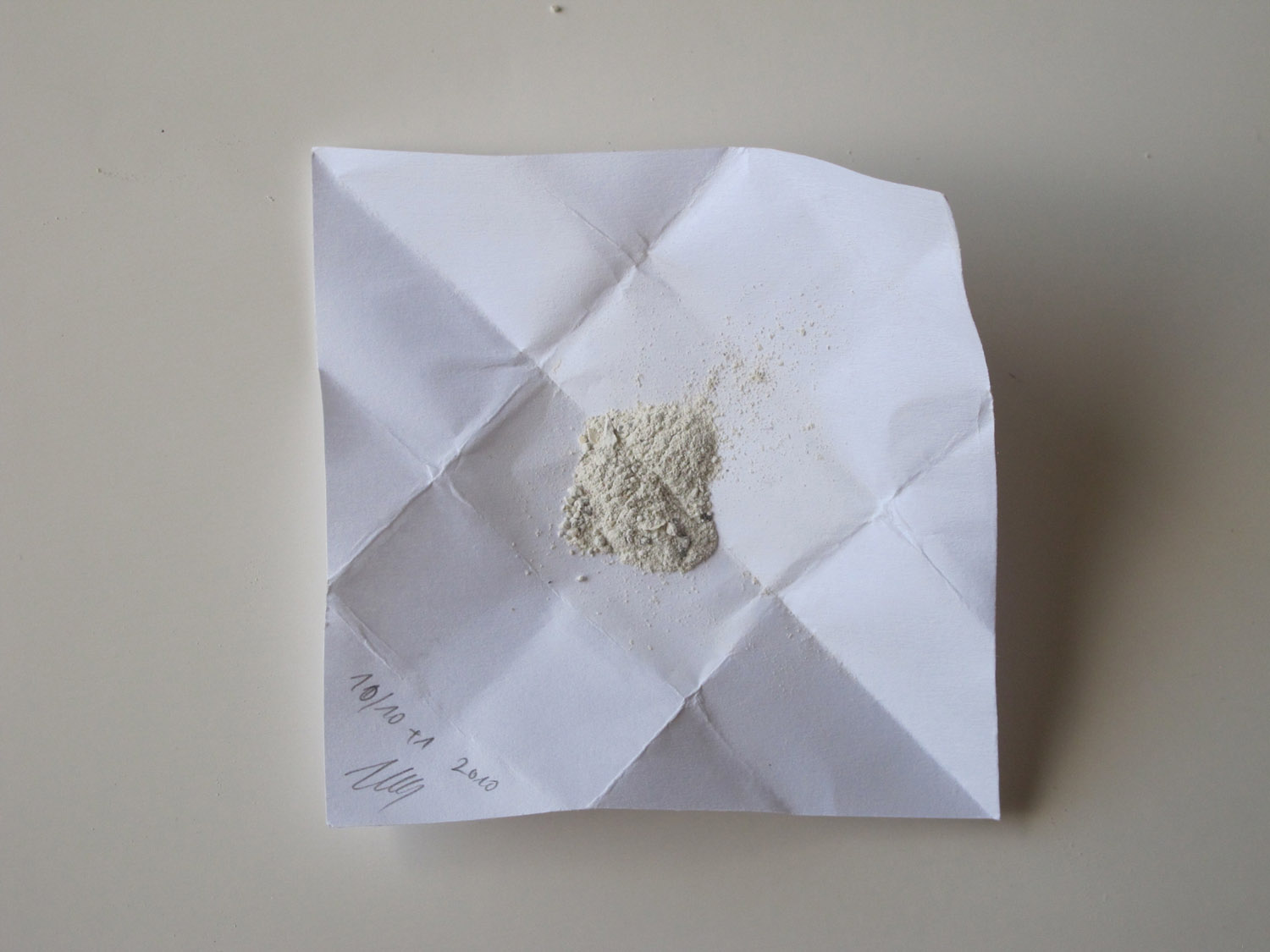Right Occasion
DD
Could you tell us briefly about your project? What is it that you’d like to do?
IM
In short the project I am presenting is to organize an opening of a solo show of mine. I’d like to keep all the rituals accompanying an opening - a big crowd, cocktail, and speech. The curator of the exhibition will give the speech and he or she will describe and interpret the works that are in the show. The only unusual thing here is that there will be no works in the space. Not only because they will be absent but because they would have never been produced. I obviously have a lot of ideas and project for works, which for one reason or another I have never realized. However, this exhibition will include also works specifically “made” for the occasion.
DD
So this will be an opening of a show with no artworks. I am not surprised as a lot of your work deals with the systems and rituals surrounding the existence of artworks - exhibition openings, museums, curators, galleries. Often what legitimize an object or an act as a work of art are precisely these systems and rituals, so I understand why you keep exploring their structures. You have also «dematerialized » works of art before - in “Guide”, 2006 you created a whole exhibition only with museum audio guides and labels on empty walls. It seems in both cases you are interested in the language that describes and validates art. Not in the ultimate authority of the written word, but here in particular, in the rather vague and sometimes pompous form of an opening speech. Is this some kind of a desire to return to an oral tradition or a resistance towards the domination of the « visual »? Why would you want a work to exist only in the language, the spoken word, of a curator?
IM
In “Guide”, 2006 I took an existing audio guide records of existing works that were already part of museums collections. This time I have only ideas for a works. I am skipping the material production, which doesn't mean that I am giving the visual. My projects are developed or will be developed in this case until the level of installation view. By listening to the curator, the audience will be able to visualize the works perfectly. Even better, they will be able to customize the works according to their ability to translate words into images. I am also interested in cutting the distance between the idea and its sharing. Why to lose time and resources when I can reach such an immediate result? Besides the opening speech is a work of art in itself.
DD.
I wonder why do you want to get rid of the process of making. Especially today when we are more than ever conscious about objects and materials and the way they communicate among themselves. Do you often encounter materials and objects as a complication to your work? Is the ideal work for you one that remains an idea?
IM
Obviously the discourse today is about objects and materials and the way they communicate among themselves. Probably that's provoking me to do exactly the opposite, not because I am different, but because if most of the great minds are there I might feel more comfortable somewhere else. I received a very traditional education in our academy in Bulgaria so I am very familiar with objects and materials and I am well trained in that. It is possible that I have some reaction against that. In this case I am more interested in the fact that this work touches on questions of authorship. I have authorship on the idea but not on the actual works. In the business world for example the idea, even when it is a good one, is not so important. There are hundreds of thousands of ideas and the valuable one is the one that can start to work as fast as possible. By work I mean making money. In that situation I am interested in sharing the idea and let it be.
DD.
Conversation is an interesting form and I would really like to know a little more about how do you imagine the communication process, which seems to be your ultimate goal. There are several levels of communication and possibilities for miscommunication as well - first you have to explain your ideas to the curator - how precise are you going to be with that? Would you describe the actual appearance of the work in the space and how you expect the public to perceive it or just the general mechanism of your idea? Then the curator has to create something out this, a talk, a speech; to give a virtual tour of the exhibition. It is well known that rhetoric and memory are linked to space - one of the techniques of memorizing a speech is to assign each subject to a room and then to mentally walk through the space as you speak. So you are emphasizing the virtual space of the memory-speech process in a way. Do you have expectation about how the curator will speak, would you want to be surprised? Would you be disappointed if they have completely misunderstood your intentions?
IM
First and important step is that I should pick a curator. That's nice because usually it is the other way around. Among all the professional qualities they have to possess for this project, they should have a nice and articulated voice and colorful language. The curators generally speak well as it is part of their job. I will present to the curator around 35 ideas for different works, then we discuss the ones he or she is interested in and go into the details. By details I mean not only the concept but also materials, forms and how the work will be positioned in the space, how it will communicate with the other works, context, etc. Exactly the same logic if the works were real.
It should be a classical opening- two microphones and an audience. Of course I will be disappointed if I happen to be misunderstood, but that’s part of the game.
DD
So the curator is really curating the show - he or she has to choose from the works you propose and frame them within some kind of an idea of what unites those works or what kind of questions he or she is interested in raising.
IM
That's right. I would like the curator to feel really comfortable in that situation, even more, I think that the curator will have more interpretation freedom then usual.
DD
You say that the most important thing is sharing your idea. If you skip the material production does it mean a faster and more efficient sharing? Does that also mean that somebody else could make those works? You mentioned the question of authorship and indeed if they don’t exist materially, ideas cannot be copyrighted or trademarked. Sharing on the other hand means giving away information or services for free as opposed to making everything potentially profitable. How do you see yourself as an artist in the economy sharing?
IM
Yes, this method should allow me to share my ideas faster. You know a lot of time you have ideas, which are on stand-by waiting for the right occasion or at least the financial opportunity to make them happen.
Now from a legal point of view you can't have an authorship on an idea for an art work. The act of sharing it in front of public somehow proves that you are the author, but if someone produces the work afterwards he or she will be the author and the owner, which I think is what I am really interested in.
In the fifties Duchamp signed unknown number of replicas of his works. Later on it became a subject of speculation and frauds on the market. You see where is difference here. It’s more about democratization or at least a different kind of approach. Everybody could have "my" work if they make the effort to produce it. Well, I am not naïve, if there turns out to be any potential for money to be made, the market will always find the way to make a profit. I am totally OK to be out of this future scheme.
 text
text

